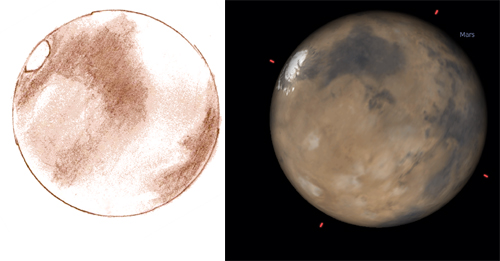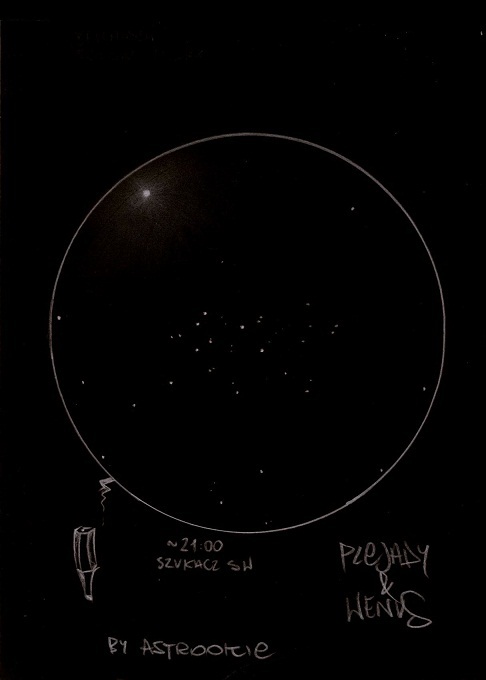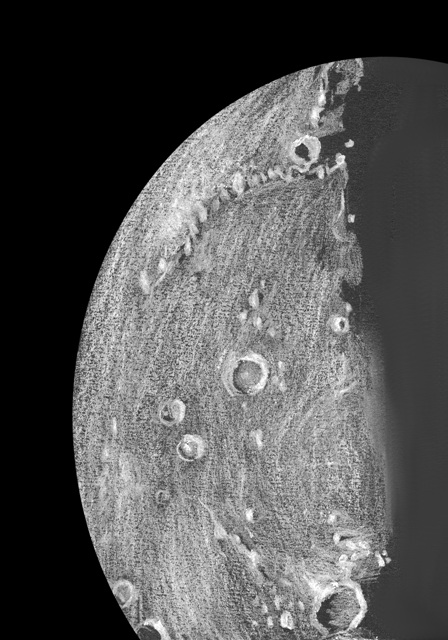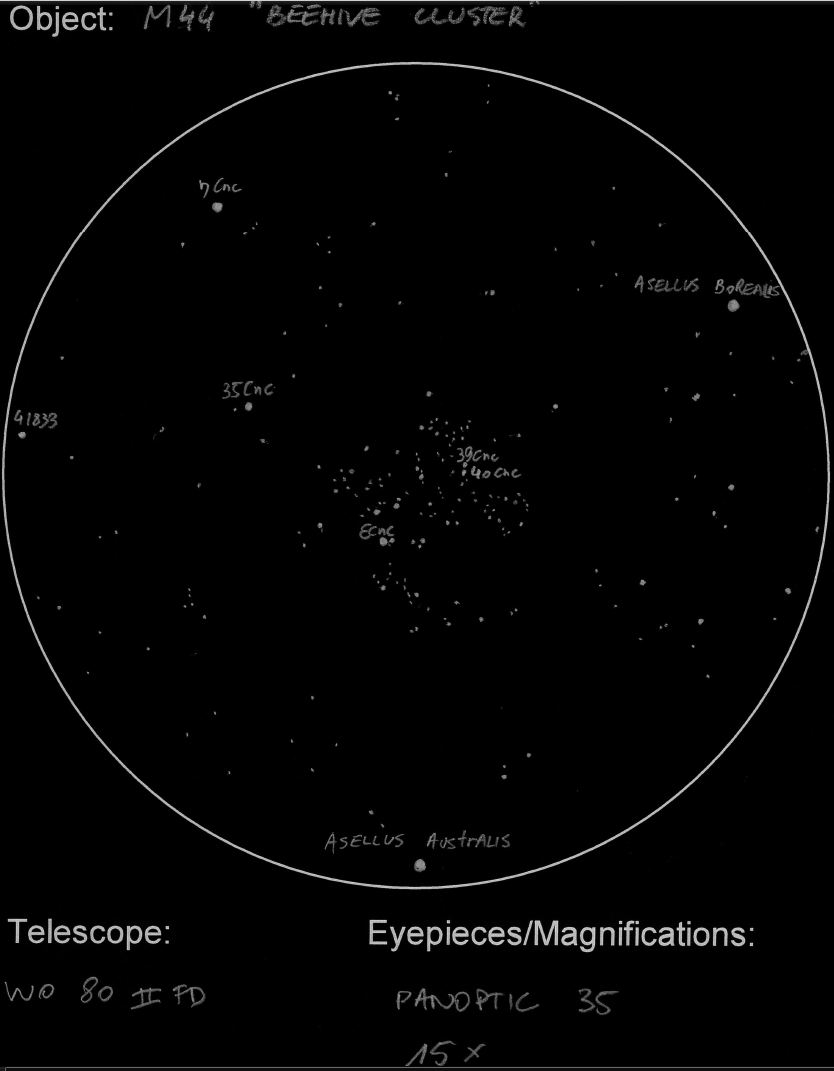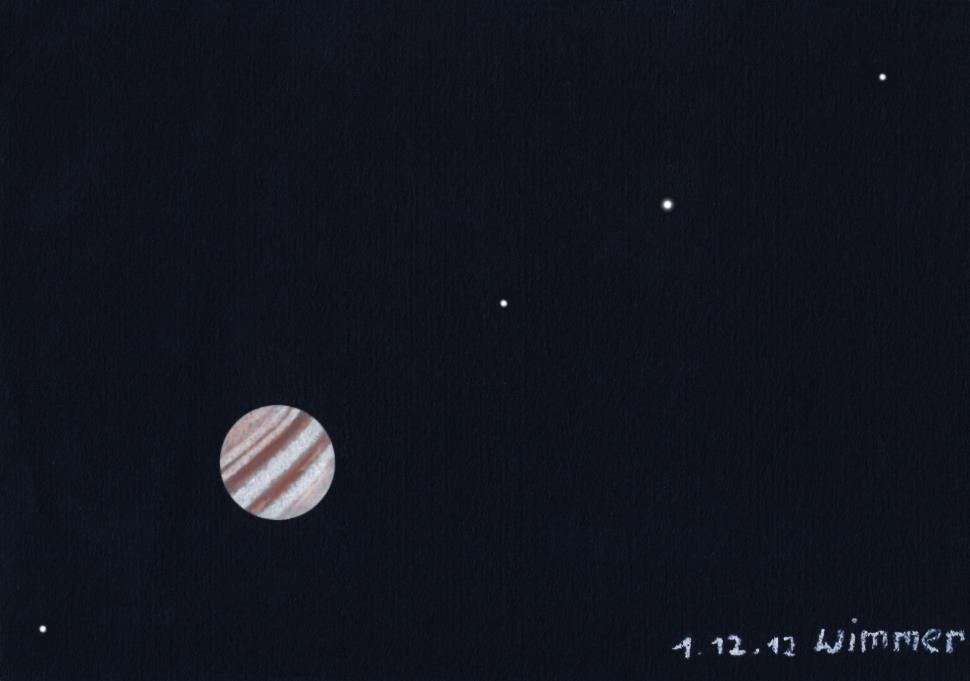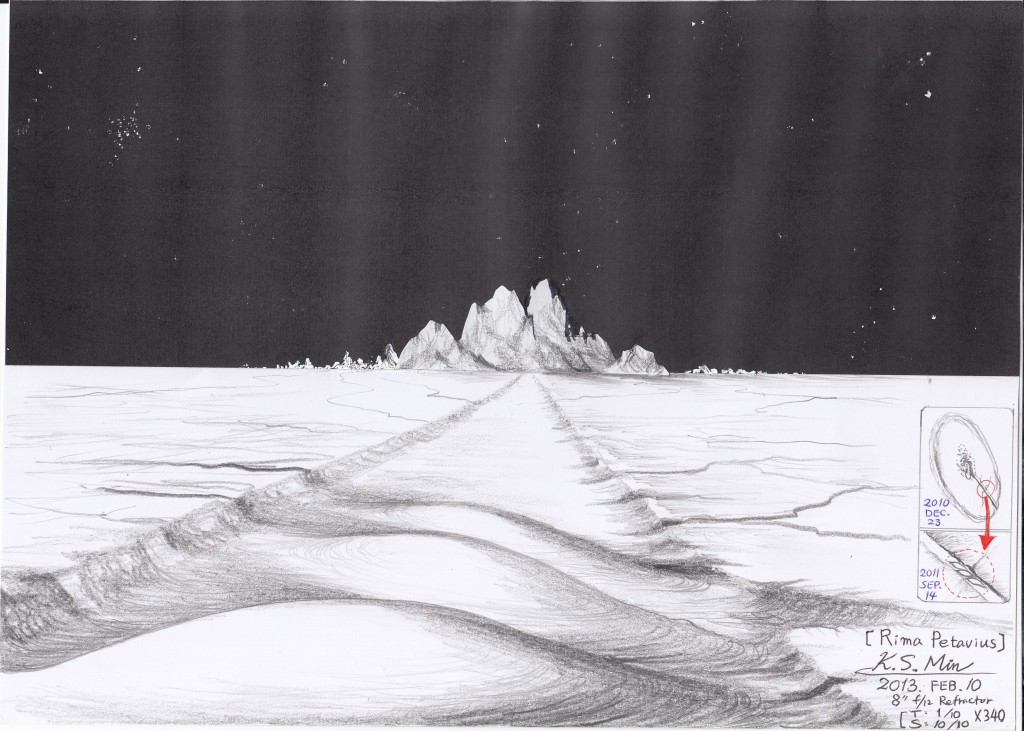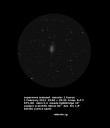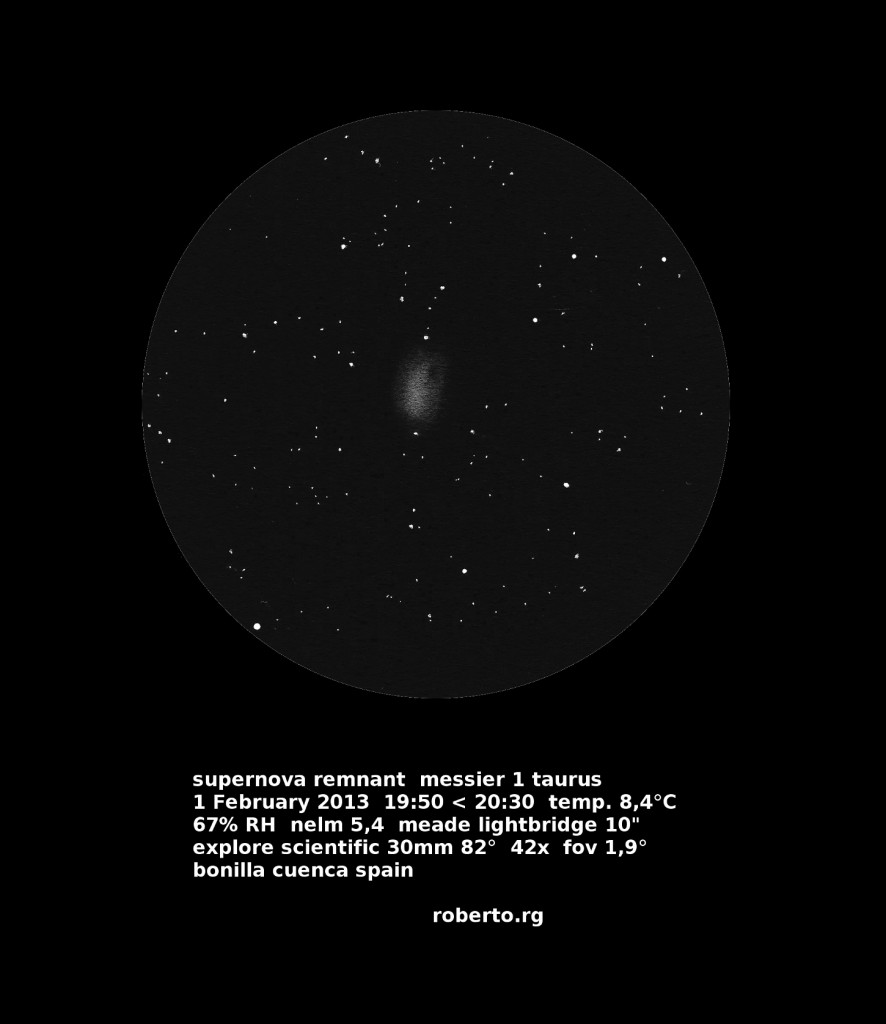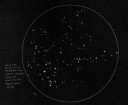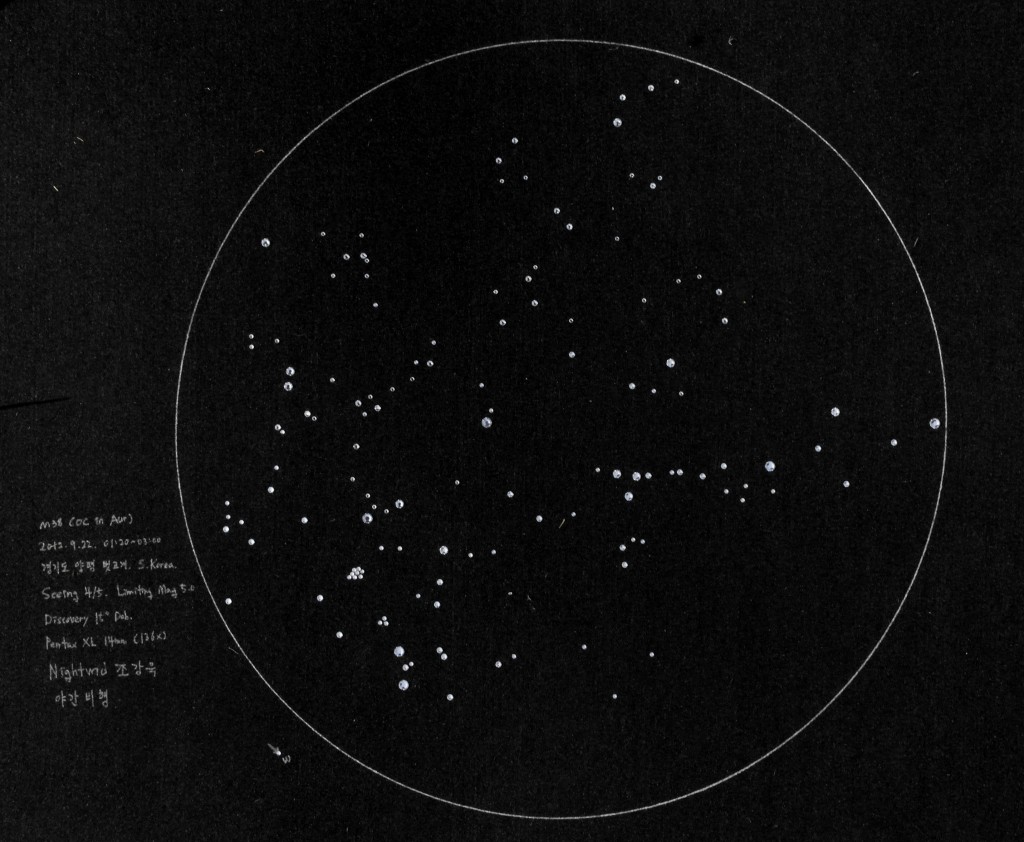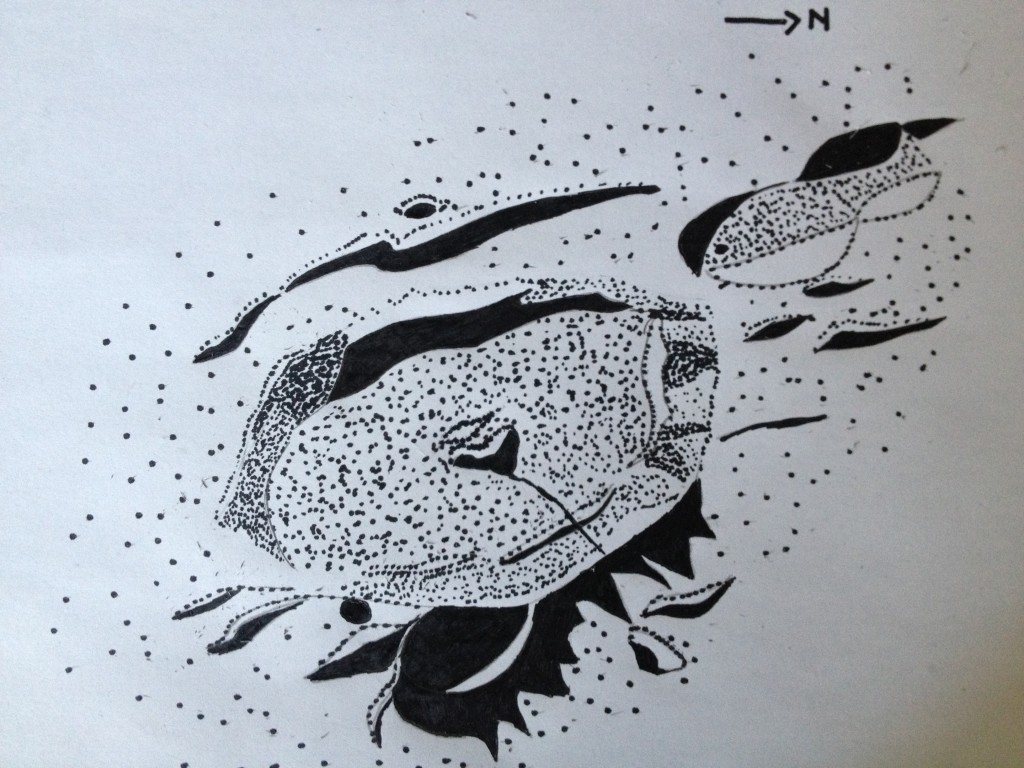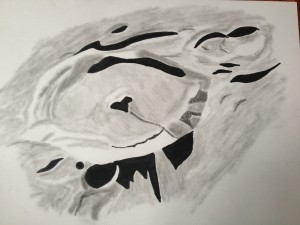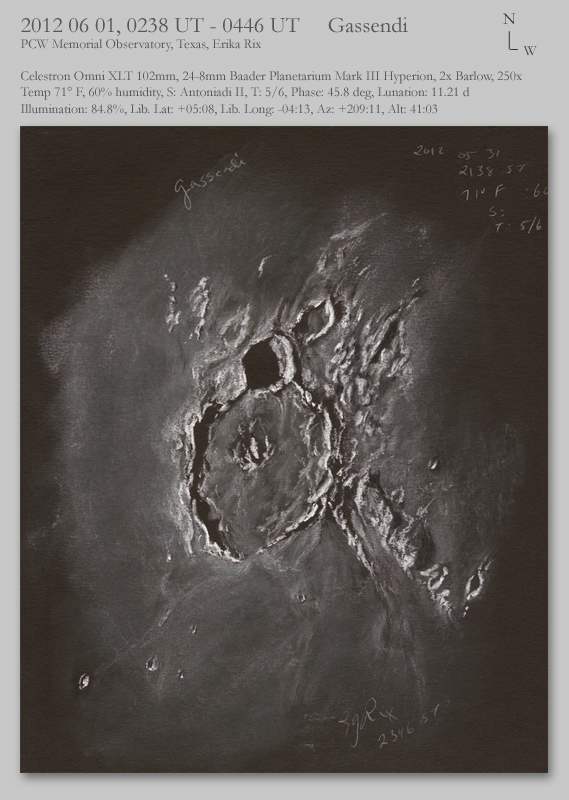
Gassendi Crater
Move cursor over image to view labels.
2012 06 01, 0238 UT – 0446 UT Gassendi
PCW Memorial Observatory, Texas, Erika Rix
www.pcwobservatory.com
Celestron Omni XLT 102mm, 24-8mm Baader Planetarium Mark III Hyperion, 2x Barlow, 250x
Temp 71° F, 60% humidity, S: Antoniadi II, T: 5/6
Eyepiece sketch black Strathmore Artagain paper, Conte crayon and pastel pencil, charcoal pencil
Phase: 45.8 deg, Lunation: 11.21 d, Illumination: 84.8%
Lib. Lat: +05:08, Lib. Long: -04:13
Az: +209:11, Alt: 41:03
Located on the northern border of Mare Humorum, crater Gassendi is an impact crater formed during the Nectarian period (-3.92 to 3.85 billion years ago) that later was modified after volcanic activity, becoming a fractured-floor crater. Gassendi is believed to have been filled with lava from the inside, raising its floor, creating stress fractures in the process. This would explain it being considered a walled plain with a shallow depth of 2.8 km. The central peaks (~1200 m high) remain and several rilles (called Rimae Gassendi) were formed on the lava-filled floor during the Imbrian geological period -3.85 to –3.2 billion years ago.
Crater Gassendi A was formed during the Copernician period (–1.1 billion years ago to the present day) and overlaps Gassendi’s northern rim. The pairing of Gassendi and Gassendi A resembles a diamond ring and makes a very striking feature to observe 3 days after first quarter or two days after last quarter of lunation. My observation was nearly three days after first quarter.
Gassendi’s southern rim was swallowed by the lava of Mare Humorum leaving only a thin crest line to support its circular shape. Dorsa ran from the southern rim to Gassendi O (11 km wide). The sharp ridge that defines the border of Mare Humorum to the SW of Gassendi adds to the crater’s unmistakable identification.
At the beginning of my session, Spica and Saturn lined up to align with the Moon. Spica was 2.08 degrees north of the Moon and Saturn was 6.9 degrees north of the Moon. Extending further north, Arcturus was nearly in line as well at 31.8 degrees north of the Moon
